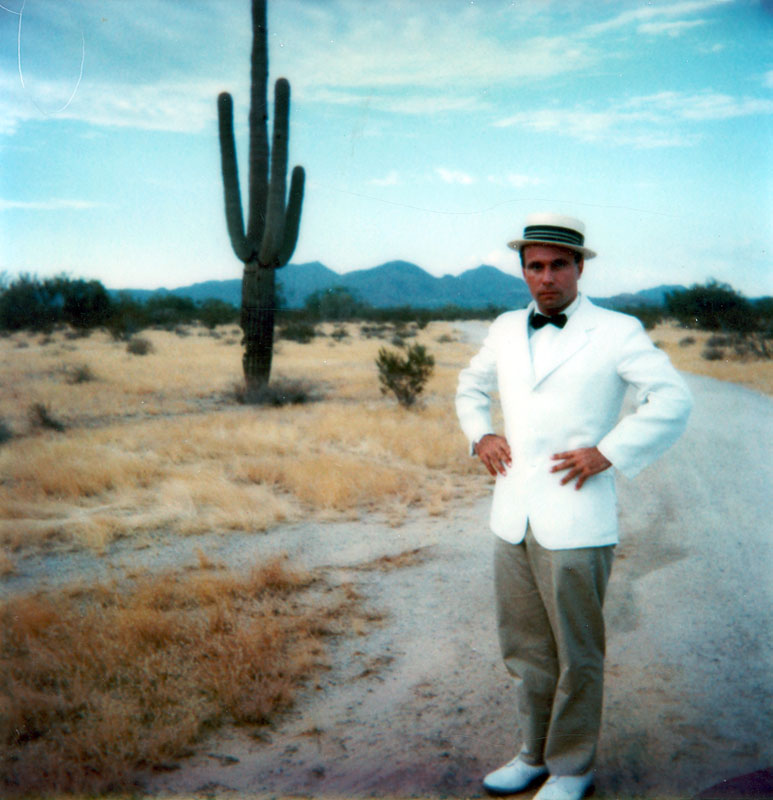Biography
Upon graduating from the San Francisco Academy, James Crosby went on to study classical painting with Frank Mason, NA, at the Art Students League in New York City. America’s foremost classical painter, Frank Mason, started Crosby on his extensive research of various unique mediums and techniques, which involve glazing and underpainting to achieve luminosity. The work begins with strong monochromatic underpaintings of egg tempera emulsions and wax mediums. Layered over these are up to eighty layers of glazes. The prismatic effect created gives the illusion of looking into the surface as though through a glass. Thus, the artist achieves transparency, luminosity, and prismatic quality as unique as the Southwest landscape, which is his subject.
Tough the work comes out of the Italian Renaissance and European tradition of such painters as Friedrich and Turner, it is essentially American in character, the predominant influence being painters of the Hudson River School, such as Fredrich Church, Homer Dodge Martin, and Martin Johnson Heade as well as the Tonalists Ralph Blakelock, A.P. Ryder, and George Innes. Like numerous artists in this and the last century, such as John Marin, Alfred Bierstadt, Georgia O’Keeffe, and the Taos painters, James Crosby has come West because he finds the Southwest landscape well-suited to his technique and expression. Economizing on detail, he focuses more on the massing [of forms] and contours as well as the all-pervasive light inherent in the Southwest landscape. As Crosby has said, “I feel the mystery is everywhere. The colors are unlike any others anywhere, and I feel as if I am in a giant prism.”
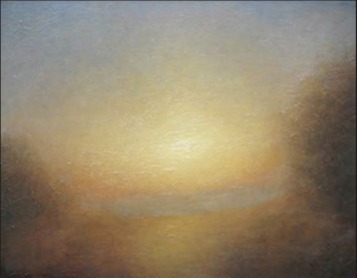
Oil on canvas, Size unknown
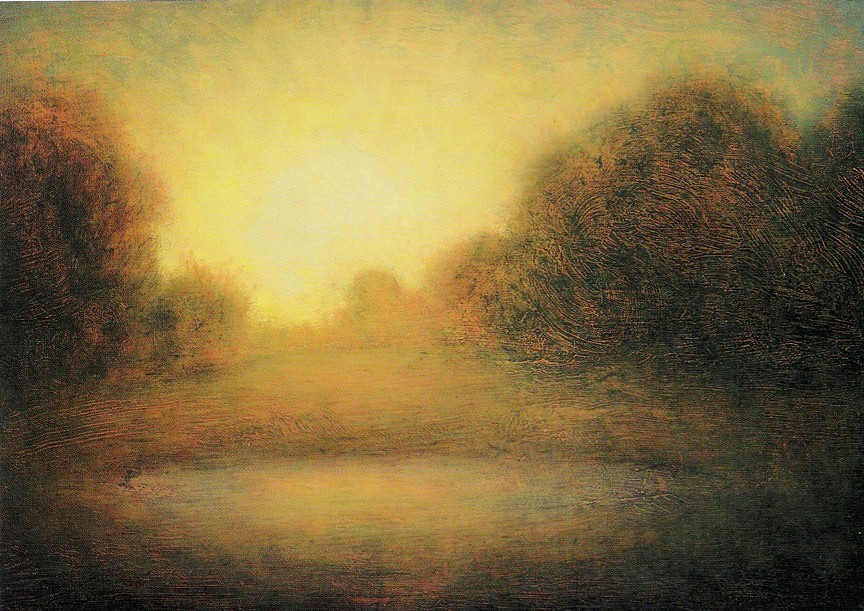
Oil on canvas, Size unknown
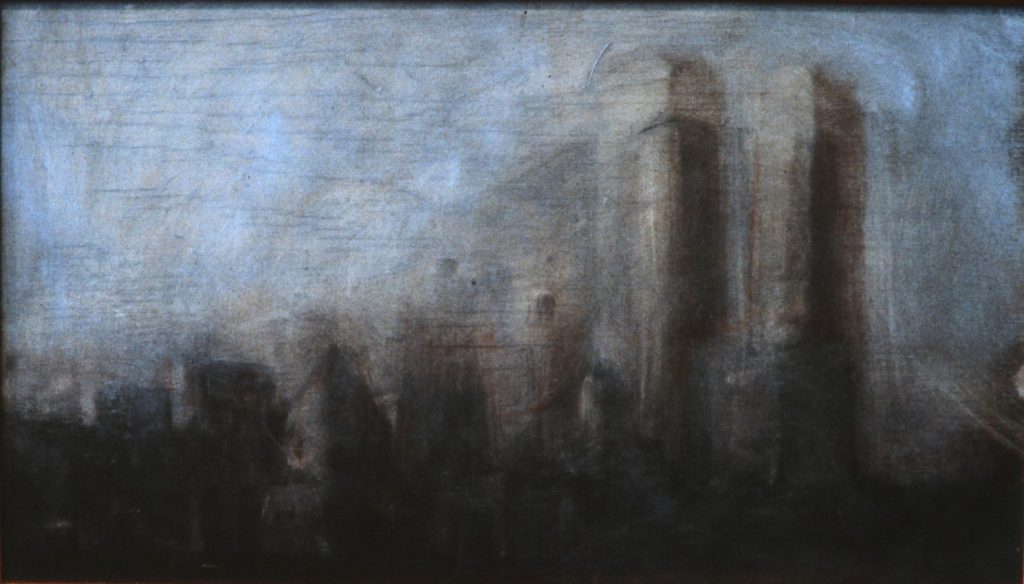
Oil on canvas, 10 x 17”
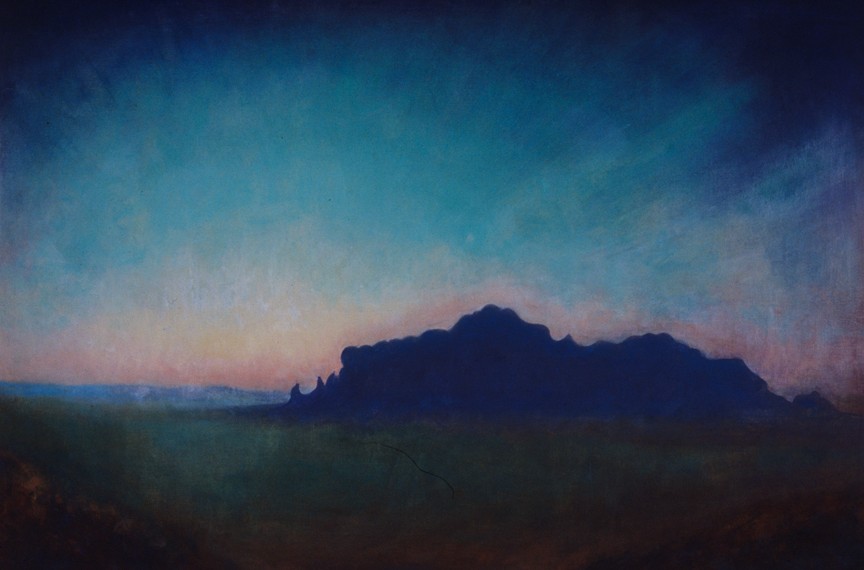
Oil on canvas, Size unknown
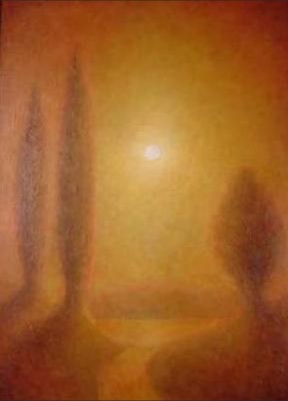
Oil on canvas, Size unknown
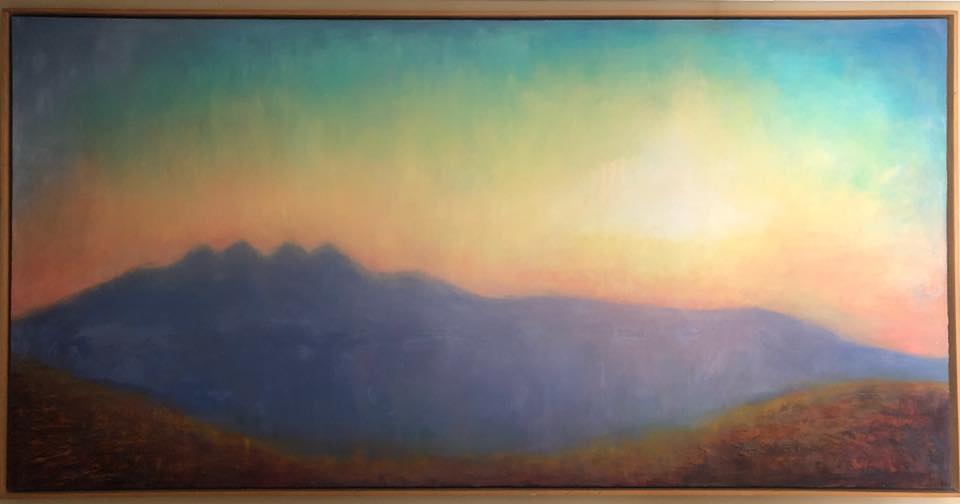
Oil on canvas, 96 x 48”
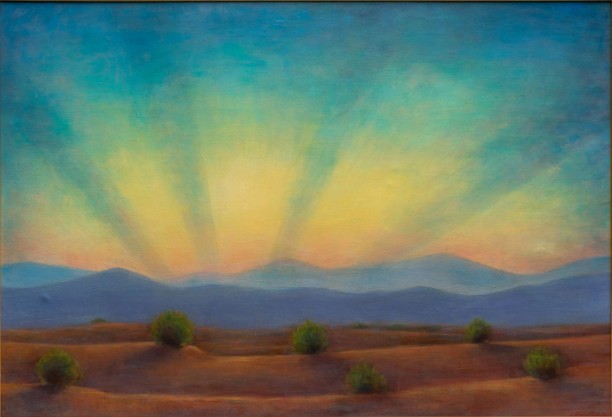
Oil on canvas, Size unknown

Oil on canvas, Size unknown
